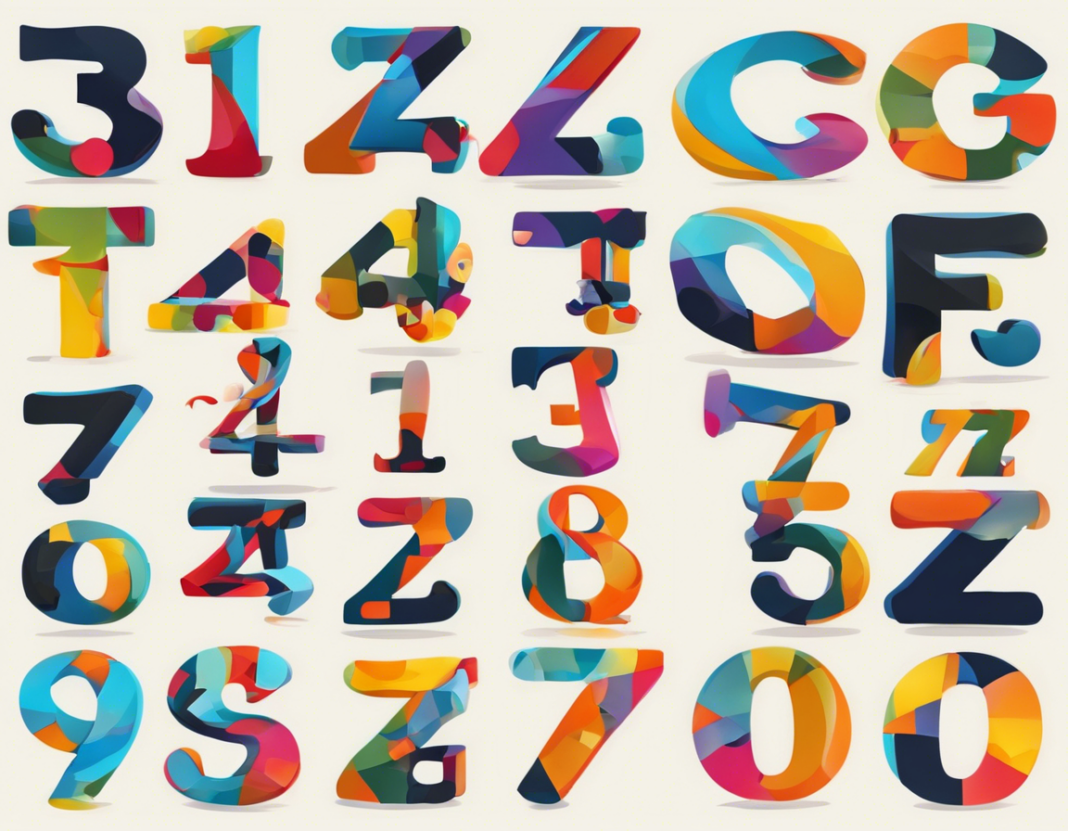In the realm of mathematics, numbers play a fundamental role in our understanding of the world around us. From the simplest concept of zero to the abstract idea of infinity, numbers guide us through calculations, measurements, and complex theories. In this article, we will delve into the world of numbers from A to Z, starting with the very concept of zero and journeying through the realms of negative numbers, imaginary numbers, irrational numbers, and finally, reaching the infinite.
The Origin of Zero
The concept of zero as a number has a profound impact on mathematics and science. It serves as a placeholder in our number system, allowing us to distinguish between numbers and perform complex calculations efficiently. The origin of zero can be traced back to ancient civilizations such as the Babylonians and the Mayans. However, it was the Indian mathematician Brahmagupta who first formalized zero as a number in the 7th century CE.
Exploring Negative Numbers
Negative numbers introduce a new dimension to our number system by representing values less than zero. They find applications in various areas such as accounting, temperature measurement, and vector mathematics. Negative numbers are denoted with a minus sign (-) before the numeral, indicating a decrease or a direction opposite to the positive numbers.
The World of Imaginary Numbers
Imaginary numbers are a unique set of numbers that extend the real number system to include the square root of -1, denoted as “i.” Imaginary numbers are crucial in solving complex equations and have significant applications in quantum mechanics, electrical engineering, and signal processing. When a real number is multiplied by i, it becomes an imaginary number.
Unraveling Irrational Numbers
Irrational numbers are numbers that cannot be expressed as a simple fraction or a ratio of two integers. The most famous example of an irrational number is pi (π), which represents the ratio of a circle’s circumference to its diameter. Irrational numbers have decimal representations that go on indefinitely without repeating, making them intriguing objects of mathematical study.
Embracing the Infinite
Infinity is a concept that transcends the boundaries of conventional numbers, representing a quantity that is larger than any finite number. In mathematics, infinity is symbolized by the symbol ∞ and is used in calculus, set theory, and various branches of mathematics to describe endless processes, limits, and sizes of sets. There are different sizes of infinity, as shown by Georg Cantor’s groundbreaking work on cardinality.
Frequently Asked Questions (FAQs)
Q1: What is the difference between natural numbers, whole numbers, integers, and real numbers?
A1: Natural numbers are the set of positive integers starting from 1, while whole numbers include zero in addition to natural numbers. Integers comprise whole numbers and their negative counterparts, along with zero. Real numbers encompass all rational and irrational numbers on the number line.
Q2: How are complex numbers different from imaginary numbers?
A2: Complex numbers consist of a real part and an imaginary part, denoted as a+bi, where a and b are real numbers and i represents the imaginary unit (√-1). Imaginary numbers, on the other hand, are purely imaginary and do not have a real part.
Q3: Can fractions also be expressed as decimals?
A3: Yes, fractions can be converted into decimal form by dividing the numerator by the denominator. The resulting decimal may be terminating (such as 0.5) or non-terminating and non-repeating (such as 0.333… for 1/3).
Q4: How is infinity used in calculus?
A4: In calculus, infinity is used to describe limits of functions as they approach certain values. Concepts such as limits, derivatives, and integrals involve the notion of infinity to analyze how functions behave at specific points or over intervals.
Q5: What is the significance of zero in mathematics?
A5: Zero serves as a fundamental concept in mathematics, enabling arithmetic operations, algebraic equations, and advanced calculus. It is a starting point for numerical systems and has cultural and philosophical implications beyond its mathematical utility.
Conclusion
From the simplicity of zero to the complexity of infinity, numbers encompass a vast array of concepts and applications in mathematics. Understanding the various types of numbers, from negative and imaginary numbers to irrational numbers and infinity, provides a glimpse into the richness and diversity of the mathematical world. By exploring numbers from A to Z, we unravel the beauty and intricacies of one of the most fundamental aspects of human knowledge and discovery.
